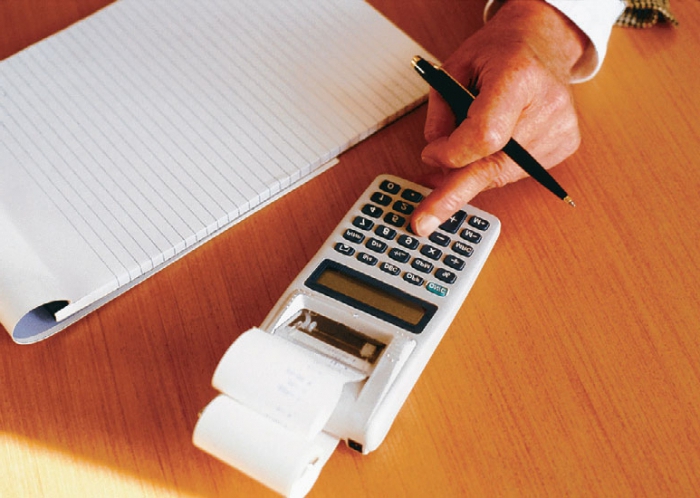In the process of carrying out economic and financial-economic activities of an organization of any of the legislatively prescribed forms, there is a need for accounting (tax) accounting, the main task of which is the systematization, accumulation and analysis of information on current, non-current, cash assets of the enterprise and their sources.
The completeness and reliability of the information of all types of accounting makes it possible to more effectively manage the enterprise. When interacting (planned and unscheduled) with fiscal state organizations, the level and accuracy of the data provided significantly reduces the possibility of sanctions.
Accounts

For the grouping of the funds of the enterprise, homogeneous in content, and their sources, the appropriate registers are used. They are called bills, the movement of each kind tangible assets calculations, capital is presented in them for a certain time period.
To reflect any (perfect) business transaction, its documentation is necessary. Accounting accounts serve to summarize information about a specific type of asset (source) for a certain period of time, on the basis of which all existing accounting registers (turnover balance or memorial, chess sheet, balance sheet with applications) are filled. Recording of business transactions on the appropriate account is based on the primary document. Their processing consists in forming a total (balance) or closing the register. After that, the information from the accounts is transferred to the balance sheet subject to its basic rule - the correspondence of the values of the active part and liabilities.
Structure
Accounts, regardless of purpose, have a standard look. This is a table consisting of two sections: debit and credit. Depending on the balance sheet of the account, the balance (balance at the beginning or end of a certain period) is recorded in its upper corner. This amount appears in all intermediate and final accounting registers.
According to the balance sheet, accounting accounts are divided between active and passive. They have an individual number and name. Active-passive accounts form a separate group and are not always reflected in the balance sheet.
The purpose of debit and credit depends on the balance sheet of the account. Business transactions that increase the amount are attributed to that part of the table that reflects the account balance. Asset movements that decrease an asset are recorded in the opposite column. When the period is closed, all debit transactions are summed up, the received value is a debit turnover, a similar operation is performed with a loan. The balance in the account is calculated taking into account the initial balance, the turnover of both parts of the table. The procedure for calculating it depends on the balance sheet. The general scheme of the account (in tabular terms) looks on paper as follows:
Active accounts
| Debit | Credit |
| C-up initial | Amount |
| Amount | Amount |
| Amount | Amount |
| Sum D turns | Sum K revolutions |
| C-up final |
Passive accounts
| Debit | Credit |
| Amount | C-up initial |
| Amount | Amount |
| Amount | Amount |
| Sum D turns | Sum K revolutions |
| C-up final |
Classification

All accounts are divided according to several characteristics: economic content, structure and in relation to the balance sheet. All types of classifications are relevant and are applied regularly. In relation to the balance, there is the following separation:
- Active accounts.
- Passive accounts.
- Active passive accounts.
According to the economic content, the division occurs into accounts:
- Household funds.
- Household processes.
- Sources of the formation of household assets.
According to the structure of education, all accounts are classified as follows:
- The main ones.
- Operating
- Effective.
- Regulatory.
- Off-balance sheet.
Chart of accounts
Grouping, combining all the objects of the accounting and tax type of accounts according to their characteristics is applied at each enterprise. This classification is approved by law and is mandatory for all tax residents in the Russian Federation.
By order of the Ministry of Finance of the Russian Federation No. 94n dated 10.31.2000, a new list of accounts was approved and instructions for their use were created. In total, it contains 99 positions of synthetic accounting; they can be opened with analytical transcripts that give a more accurate picture of the work and functioning of the organization. 60 positions are used, the remaining 39 make up a reserve, which can be used when changing or optimizing accounting legislation. The chart of accounts has the following main sections:
- Non-current assets (intangible, fixed).
- Current assets (raw materials, productive reserves, spare parts, materials, etc.).
- Production costs (costing and distribution accounts).
- Goods, finished products, sales (cost and sales).
- Cash (in cash and non-cash).
- Settlements (with various contractors, suppliers, buyers).
- Economic, financial results (interim and final) and the use of profits.
- Reserves and funds of the enterprise.
- Financing and loans.
- Off-balance accounts.
Sections are formed on economic grounds. One may contain active accounts and passive ones. Numbering is provided from 01 to 99 accounts, sometimes used off-balance registers have codes from 001 to 011. Active-passive accounting accounts are also in the plan, their serial number corresponds to the section. Each enterprise, organization has a legislatively fixed right to use only the necessary accounts, or to expand the accounting system through analytics. All permitted changes to the chart of accounts are reflected in the accounting policies of each enterprise (if necessary, adjustments), which is part of the constituent (charter) documents.
Correspondence
The principle of double entry is fundamental in the performance of any accounting transaction. This means that any movement of funds, assets, calculations or capital is reflected twice, on the debit of a certain account (it is possible to use sub-accounts) and the credit of another, while the amount should be the same. Account Correspondence or wiring can be complicated. In this case, the amount remains unchanged, but the loan or debit contains several accounts. Accordingly, the balance is maintained between the sides of the balance: asset and liability.
Active Accounting Accounts

Structured accounting of the property of an enterprise, its cash, current assets requires a large number of registers. This is due to the fact that the balance sheet asset has a rather complex structure. In most cases, not only synthetic, but also a large number of analytical accounting registers are used. By types, the following active accounts are distinguished:
- Inventory taking into account the property of the enterprise (01, 04).
- Cash, reflecting the funds of the enterprise in cash and non-cash form (50, 51, 55, 57).
- Collective-distribution, open to form costs that are not related to the process of main production, but are included in the cost by distribution in proportion to any characteristic (25, 23, 26).
- Cost or costing, designed to form the cost of the finished product.
- Settlement, designed to work with various debtors on advances received and making claims to counterparties.
Structure
Active accounting accounts have a balance (balance) at the beginning of the period or its end only on debit. Transactions associated with the consumption of material (circulating) stocks of an enterprise, cash or a decrease in the value of non-current assets are recorded on the credit of the account. According to the debit, they increase. The balance of active accounts can only be debit. It is calculated by the formula: Balance at the beginning + Turnover by debit - Turnover by credit = Balance at the end of the period. The balance is reflected in the balance sheet, its active part, and denotes the actual availability of material resources in monetary terms.
Active Passive Accounting

When carrying out business activities, an enterprise interacts with a number of counterparties, settlements with which for a certain period of time may have ambiguous indicators. The largest number of active-passive accounts are settlement or form the result of the work of the enterprise, organization. The balance in such cases can be both on debit and on credit of the register. In some cases, the active-passive account has two balances, which are reflected in the balance sheet as the difference in amounts, or, respectively, debit - to the asset, credit - to the liability. Typical examples of such accounts are 60, 71, 62, 76, 75, 99.
Structure
The debit balance (balance) of the active-passive account reflects the amount of advance payments of various counterparties, or the balance of assets. During a certain reporting period, this amount will be adjusted in a positive way due to the receipt of new assets or reduction of settlement balances. The credit balance denotes the balances of the sources of formation of all (current, cash, non-current) funds.
Loan turnover reduces the amount of remaining tangible assets and increases the existing amount of debt. For objective control of settlements on active-passive accounts, it is necessary to use analytical accounting, the data of which will form the overall picture of the register at the end of the reporting (final or interim) period. The amounts received will be reflected in the balance sheet of the enterprise.








